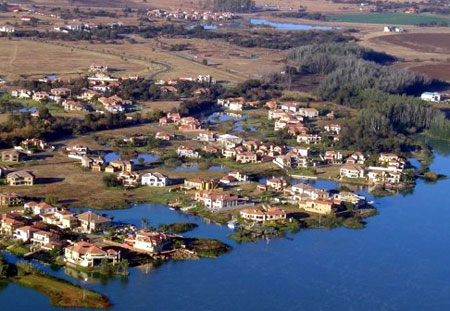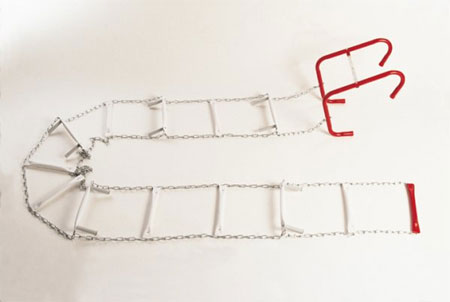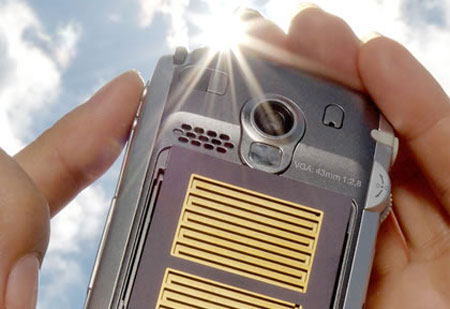Plan For Any Emergency
As extreme weather conditions increase having an evacuation and communication plan, and making sure everyone knows where to go in case of an emergency, can be the key to protecting your home and family.
Let’s face it - contemplating catastrophe can be stressful. Some people even feel like they’re courting a disaster by planning for one. That’s a natural response, but it’s not in your best interest as a homeowner.
Denial is a pretty strong emotional mechanism for trying to put yourself at ease, but if you deny that a crisis will ever occur, you won’t invest the time or energy in preparing to respond and protect yourself. Part of that preparation should include an evacuation and communication plan.
Think about escape routes in advance
It’s hard to think clearly when the floodwaters are rising. That’s why you need to plan how to safely exit your house now, not when you’re panicking during an actual emergency. The particulars of your plan will vary depending on what kind of house you have but here are some general guidelines:
- Have two ways to escape every room. Buy escape ladders for upstairs windows, then practice using them.
- Learn the safest way out of town, and keep maps handy.
- Designate a meeting place if family members are scattered. If the rendezvous point is your house, also pick a second location, such as an office or relative’s house, in case home is off-limits.
Designate a “communication commander”
An emergency can knock out telephone and cell service, so it’s important to have a “communication commander” who can receive and relay messages between family members. Choose someone out of your area whose phone service is less likely to be disrupted, and give that person cell phone, office numbers, and email addresses for everyone in the family. Each family member should carry the communication commander’s contact info, too. Program it into your cell phone address book and label it “ICE”—in case of emergency.
Use technology to stay in touch
Even when some communications methods don’t work, others might. For instance, text messages can often be sent when other cell service is down. Here are some other technology workarounds that could help in an emergency or power outage:
- Hook your Internet router to an uninterruptible power supply (UPS) to keep online service running long enough to send out emergency notifications. You can buy one for under R1000 that will keep the computer running for about 15 minutes after the power goes out.
- Keep a corded phone at home. In a power outage, cordless handsets are useless.
- Get a solar charger for your cellphone - you never know when you might need it.
Are important papers in order
If a flood destroys your home, you could spend weeks or even months just trying to re-create the essential documents you’ll need to get back on track. That’s why it’s critical to have backups of important papers, including the any plans for your house, proof of insurance, medical records, passports, and a list of personal contacts. Keep one copy at home in a portable case and another offsite in a safe place. And while you’re at it, use the opportunity to check whether your insurance is up to date and what it covers. People often don’t know what their homeowners’ insurance policy covers, and most don’t cover flooding. Find out what hazards your area faces, and make sure you’re protected against them.
Think about what you need for the safety of your house, too. Knowing where to find the main electrical and water shutoffs—and having the right wrench to turn them—can make the difference between a house that weathers the storm and one that experiences catastrophic flooding or fire.
A basic emergency kit
Keep a “grab and go” bag handy with these items in case you need to evacuate:
Water: One litre per person per day for at least three days, for drinking and sanitation; double if you live in a very hot climate, have young kids, or are nursing. Bottled water is best, but you can also store tap water in food-grade containers or two-litre soda bottles that have been sanitized. Factor in your pet’s water needs, too.
Food: At least a three-day supply of nonperishables and a can opener. Pack protein, fruit, and vegetables, but make sure they’re in a form you actually like—it’s bad enough not to have access to fresh food without also having to subsist on nothing but canned tuna. Include treats like cereal and energy bars. Store food in pest-proof plastic or metal tubs and keep it in a cool, dry place.
Flashlights and extra batteries: Candles are not recommended because there are many house fires caused by candles left unattended.
First-aid supplies: Two pairs of sterile gloves, adhesive bandages and sterile dressings, soap or other cleanser, antibiotic and burn ointment, eye wash, thermometer, scissors, tweezers, petroleum jelly, aspirin or non-aspirin pain reliever, and stomach analgesics such as Rennie, and a laxative.
Sanitation and hygiene supplies: Moist towelettes, paper towels, toilet paper, garbage bags, and plastic ties. You might also want travel-size shampoo, toothpaste/toothbrush, and deodorant.
Plastic sheeting, duct tape, and dust masks: In case you need to seal your home or shelter from airborne contaminants.
Extra items: A whistle to signal for help, a favourite toy or other comfort items for kids.
Update your kit as your needs change, and replace food and water approaching its expiration date. You might pick a specific time each year to check, such as before hurricane season in the south or after Thanksgiving if you live in the north.



